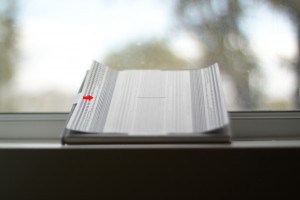Unless you are very lucky, you have probably noticed that not all your lenses focus perfectly every time. Some might focus a little bit in front of the subject, others a bit behind it. These issues appear mostly when using a long and wide aperture lens such as the 50mm 1.8 (or 1.4) where the depth of field is less than 1cm.
While there might be a few possible cause for this issue (ex: faulty AF on the lens, problem with the body, etc) the most common is a small discrepancy between the lens and its ‘perfect’ version that was supposed to come out of the factory. There is no need to return the lens, it is almost normal for lenses to be a little bit different from each others. This difference make them focus a bit differently while the body is set to work with the ‘standard and perfect’ version of the lens. This is why two copies of the same lens might focus differently from each others on the same body, and even differently from one body to the next.
Fortunately for us, manufacturers are aware of this and have taken care of the issue in their pro and semi-pro bodies. This is where the custom function AF Micro adjustment comes into play. This function allows you to correct slight front or back focussing issues for each of your lenses. People generally refer to this operation as ‘lens calibration’. It used to be quite a chore because of the lack of tools to support the process but now it can be done in less than 2-3 minutes per lenses.
What you will need:
- Tripod
- Computer & usb cable
- Printed focus chart
- Capture One Pro or any other application allowing tethered shooting
You might be surprised to see Capture one instead of Aperture on the list. The reason is that I have never managed to have Aperture work in tethering mode while Capture On Pro works perfectly. Even better, capture one keeps the zooming and point of interest when moving from one shot to the next. You can pick a demo version of Capture One that works without restriction for 30 days to do the calibration, like I did, and you might want to keep it to process your RAWs, but that is for another blog post…
Instead of repeating Jeffreys’ excellent explanations on his site, I encourage you to go and read the whole thing. I will add a few pointers:
- Dont set the focus chart to close. Canon recommends to be at least at 20 times the focal length. So for a 50mm lens, it means 1 meeter.
- If you want to calibrate a zoom, do each extremes and in case of differences (there will be), you will have to make a choice.
- Repeat the focussing a few times to make sure you have consistent results. Inconsistent results are mostly caused by a faulty lens and you might want to send it back to Canon for maintenance since it can’t be fixed with the micro adjustment.
- Dont expect perfection. With today super high megapixel count cameras, 100% zoom will reveal some blurriness around the text of the focus chart. It is ok, the text is very small and you are never going to check it at 100% anyways!
- Dont use the ‘Apply to all lenses’ choice, adjust each lens individually.
So, what kind of gain can you expect from doing this? Below are the before and after pictures taken with my girlfriend 50D with a 50f1.4.


While the focus is not perfect, the improvement is obvious. The problem in this case is that we reached the maximum +20 on the micro adjustment setting. Since her camera is only a week old, we are going back to the store to exchange it for another one.
I hope this post is going to help you guys. I encourage you to take an hour and test your lenses in a repeatable fashion. The improvement in sharpness you can gain will result in more keepers the next time you go shoot!
 Canon5Dtips Photography is more than words.
Canon5Dtips Photography is more than words.



